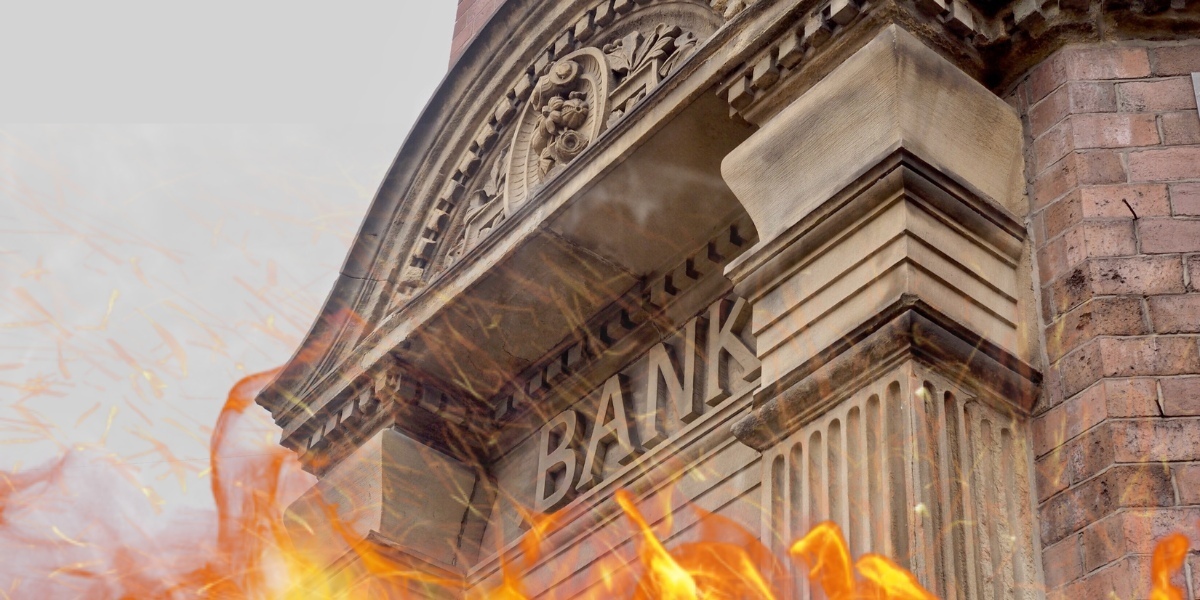Money makes the world go round. Without money, getting your hands on basic necessities like food, shelter, and clothing becomes a Herculean feat. That’s why we must keep the money we work so hard for safe.
Banks are supposed to be a safe place to keep our money, but what happens when a bank fails? What happens to your money?
Well, we don’t have to look far for an example. Earlier this month, Silicon Valley Bank (SVB) suffered the second-largest bank failure in the history of the United States.
A few days earlier, the bank announced that it was strapped for cash. If a bank doesn’t have money, it can’t repay the people it owes.
This happened because SVB made some investment decisions that didn’t pay off.
Unlike the greedy investments fat cat bankers made in 2008, SVB made safe investments-they invested in US government bonds. It can’t get any safer than that.
But these bonds paid low interest, and the bank didn’t count on the rapid rise in interest rates. The math is simple, getting low interest, paying high interest. As a result, the bank was stuck with more than $17 billion in potential losses at the end of last year.
In a panicked effort to raise money, SVB sold parts of itself as shares. When that didn’t work, the bank tried to sell itself entirely. However, no one was interested in buying a sinking ship.
To the public, this signalled the end for SVB. What would you do if it sounded like your bank was about to bite the dust? You would probably withdraw your money and run for the hills.
That’s exactly what SVB’s customers did. This caused a surge in bank withdrawals, commonly called a bank run. In simple terms, a bank run is when a large number of customers of a bank withdraw their deposits at the same time.
This usually happens when customers are worried about their bank going under. SVB faced $42 billion in withdrawals all at once.
SVB didn’t have enough money, so the US Federal Deposit Insurance Corporation (FDIC) stepped in.
The FDIC is part of the federal government responsible for ensuring Americans’ savings at FDIC-insured banks nationwide. If an insured bank fails, the FDIC ensures all customers receive their money, up to $250,000.
In other words, you are fine unless you have more than $250,000 deposited in an insured bank. Any more than that, and there is no guarantee you will receive your money.
However, the US Government made an exception for SVB customers. That’s because most of SVB’s customers were tech startups, with millions deposited in the bank, of which 85% were uninsured.
So the Treasury Department, Federal Reserve, and the FDIC announced that all SVB customers would get their money back on Monday even if they had more than $250,000 deposited.
I’m working with my CA colleagues to address the Silicon Valley Bank crisis. We must make sure all deposits exceeding the FDIC $250k limit are honored. Banking is about confidence. If depositors lose confidence on the safety of their deposits over 250k then we are in trouble.
— Rep. Eric Swalwell (@RepSwalwell) March 10, 2023
Let’s address the elephant in the room. If this could happen at a bank as large as SVB, how safe are banks in Canada? Do you need to worry about your bank failing?
Long story short, no. While there is an arm of SVB in Canada, it does not have commercial or individual deposit accounts. However, even if there was an SVB bank failure in Canada, there are systems to help.
For example, Canada has something similar to the FDIC, the Canada Deposit Insurance Corporation (CDIC). In Canada, if a CDIC-insured bank were to fail, the CDIC would cover deposits up to $100,000.
So unless you have more than $100,000 deposited in your bank, you likely have nothing to worry about. Besides, there have been zero bank failures in Canada since 2001.
“We are risk-averse, culturally and institutionally [now]…that’s the fundamental difference between Canada and the US when it comes to finance,” said Editor-In-Chief of The Financial Post, Kevin Carmichael, during a The Herle Burly podcast.
There are lots of problems with Canadian banks. Our banks have lousy customer service and high fees and continue to invest in projects that risk becoming obsolete once strong climate rules are implemented. But when it comes to your money, Canadian banks don’t take risks. Compared to the US, Canada has far more regulations to safeguard your money.
While you may have to worry about oil companies gouging you at the pump, and grocery stores overcharging you at the till, you can relax a bit because you don’t have to worry that Canadian banks will fail and you’ll lose your money.



